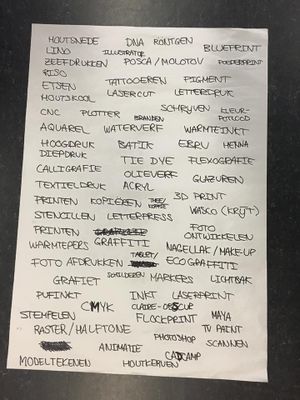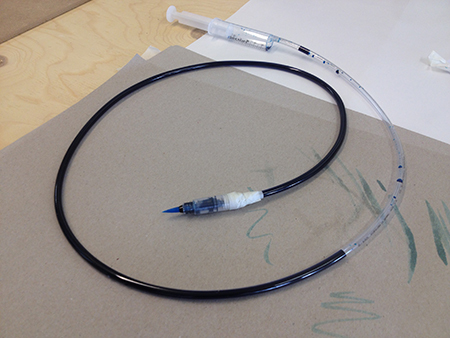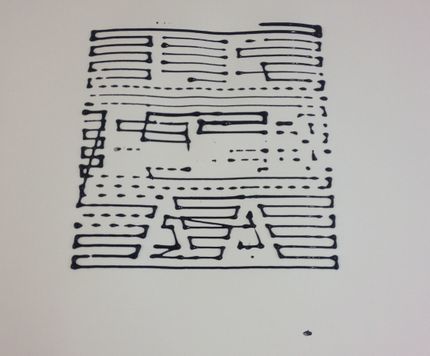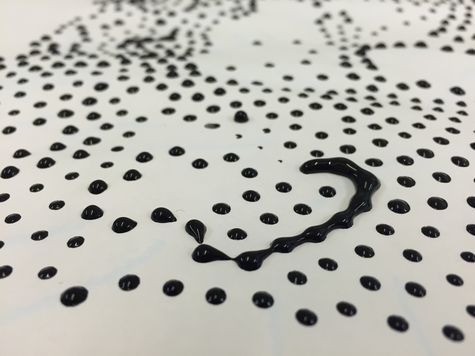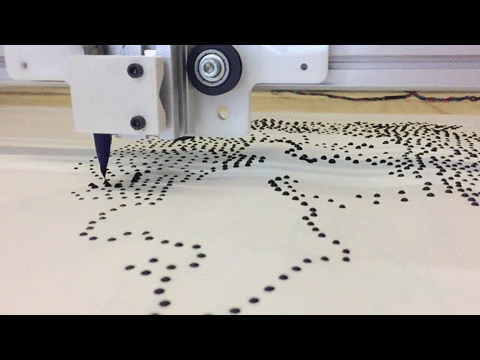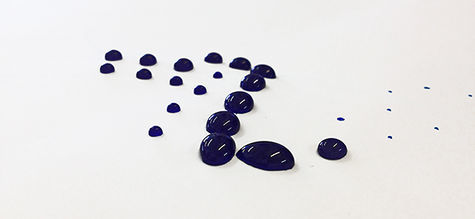Difference between revisions of "User:Roos Peltenburg"
| Line 98: | Line 98: | ||
practice with new materials, a specific theme, a position in a larger | practice with new materials, a specific theme, a position in a larger | ||
debate etc.)'' | debate etc.)'' | ||
| + | |||
| + | |||
| + | Describe in around 300 words what the broader cultural or historical | ||
| + | context is of the technique/craft/process/tool/material you've focused | ||
| + | on? Example: how does it relate to how that | ||
| + | technique/craft/process/tool/material has been traditionally used? or: | ||
| + | What meaning in culture does your technique/craft/process/tool/material | ||
| + | have? or: How does your technique/craft/process/tool/material relate to | ||
| + | the what we've read about in Making Is Connecting? | ||
| + | |||
| + | Describe in around 100 words how can the | ||
| + | technique/craft/process/tool/material you've worked impact your | ||
| + | practice? Example: doe you now consider working with different | ||
| + | materials? or: do you think the technique/craft/process/tool/material | ||
| + | will allow you to explore new visual languages within your practice? | ||
| + | |||
kort samengevat statement: | kort samengevat statement: | ||
| + | Look back on what you've written so far (around 900 words!) and write a | ||
| + | 100 word statement on why you make. This can be a conclusion to your | ||
| + | text, a short manifesto or perhaps the text to use for those who are | ||
| + | making a booklet as their practical project? | ||
| − | + | example reflects statement | |
Revision as of 22:15, 21 April 2015
Contents
Theorie Making is connecting
- Introduction
- The meaning of making I: Philosophies of craft
- The meaning of making II: Craft today
- The meaning of making III: Digital
- The value of connecting I: Personal happiness
- The value of connecting II: Social capital and communities
- Tools for change
- Web 2.0 not all rosy?
- Conclusion
Proces
Printing and drawing.
Glitch ...
Nieuwsgierig naar de mogelijkheden van afdrukken zonder gebruik pen/verf hoogdruk - diepdruk toeval overlaten
Historical example
Etsen, een diepdruktechniek waarbij een koperen of zinken plaat wordt gebruikt waarin de afbeelding door zuur geëtst is.
- Stappenplan Etsen [1]
- Oorsprong [2]
Droge naald is een diepdruktechniek waarbij men, doorgaans door middel van fijne, staalharde etsnaalden, een tekening krast in een plaat. [3]
Comparative example
Vergelijken in techniek/gereedschap/ materialen. bijv. tijd, half machine/half handwerk
luchtdruk
puff inkt/ bleek enz
Example of a new skill
doka
Uitproberen van iets dat je nooit gedaan hebt. Bekijken wat je hebt geleerd.
wat je nog moet leren om het goed onder de knie te krijgen.
Example of a material pushed to the limit
Kiezen van gereedschap en materiaal en daarin grenzen opzoeken. bijv. hoe complex, hoe dun mogelijk enz
latex/ siliconen
Workshop Indianen studio in Antwerpen met Tim Knapen. Longhand publishers In deze workshop ging het om het gezamenlijk creëren van een example. Onze tool daarvoor was de tekenmachine gemaakt met OpenFrameworks en Arduino. Gebruik maken van andere materialen dan pen/potlood kon zorgen voor interessante en nieuwe uitkomsten en daarom gingen we daarmee experimenteren.
Gebruikte materialen
- Ecoline + water
- Acryverf + water
- spuit
- slang
- color brush
Eerst hebben we Ecoline + water gebruikt in de spuit, door teveel kracht bleven er bolletjes verf op het papier liggen. Om deze bolletjes in stand te kunnen houden ook na het opdrogen gingen we experimenteren met Acrylverf. De luchtdruk in de spuit zorgde ervoor dat we 'bolletjes' konden creëren. Des te harder de spuit ingedrukt werd des te meer Ecoline/Acrylverf er uit de punt van de Colorbrush kwam.
Statement Why I make
- Describe in 100 words what you have been working on so far. (How does it look? What was the process? What materials / techniques are used? Are the crafted objects, big, heavy, soft to the touch, extremely delicate etc. Keep this description focused on describing what you can see when you look at your work.)
- Describe in 200 words what materials/tools/processes you are most interested in and why that is the case. (Focus on the things you have been making during this course.)
- Describe in 200 words what the content of your work for this course is. (Is it an exploration of different techniques, the creation of a new tool, the mastering of a specific process, the expansion of your practice with new materials, a specific theme, a position in a larger debate etc.)
Describe in around 300 words what the broader cultural or historical
context is of the technique/craft/process/tool/material you've focused
on? Example: how does it relate to how that
technique/craft/process/tool/material has been traditionally used? or:
What meaning in culture does your technique/craft/process/tool/material
have? or: How does your technique/craft/process/tool/material relate to
the what we've read about in Making Is Connecting?
Describe in around 100 words how can the technique/craft/process/tool/material you've worked impact your practice? Example: doe you now consider working with different materials? or: do you think the technique/craft/process/tool/material will allow you to explore new visual languages within your practice?
kort samengevat statement: Look back on what you've written so far (around 900 words!) and write a 100 word statement on why you make. This can be a conclusion to your text, a short manifesto or perhaps the text to use for those who are making a booklet as their practical project?
example reflects statement
